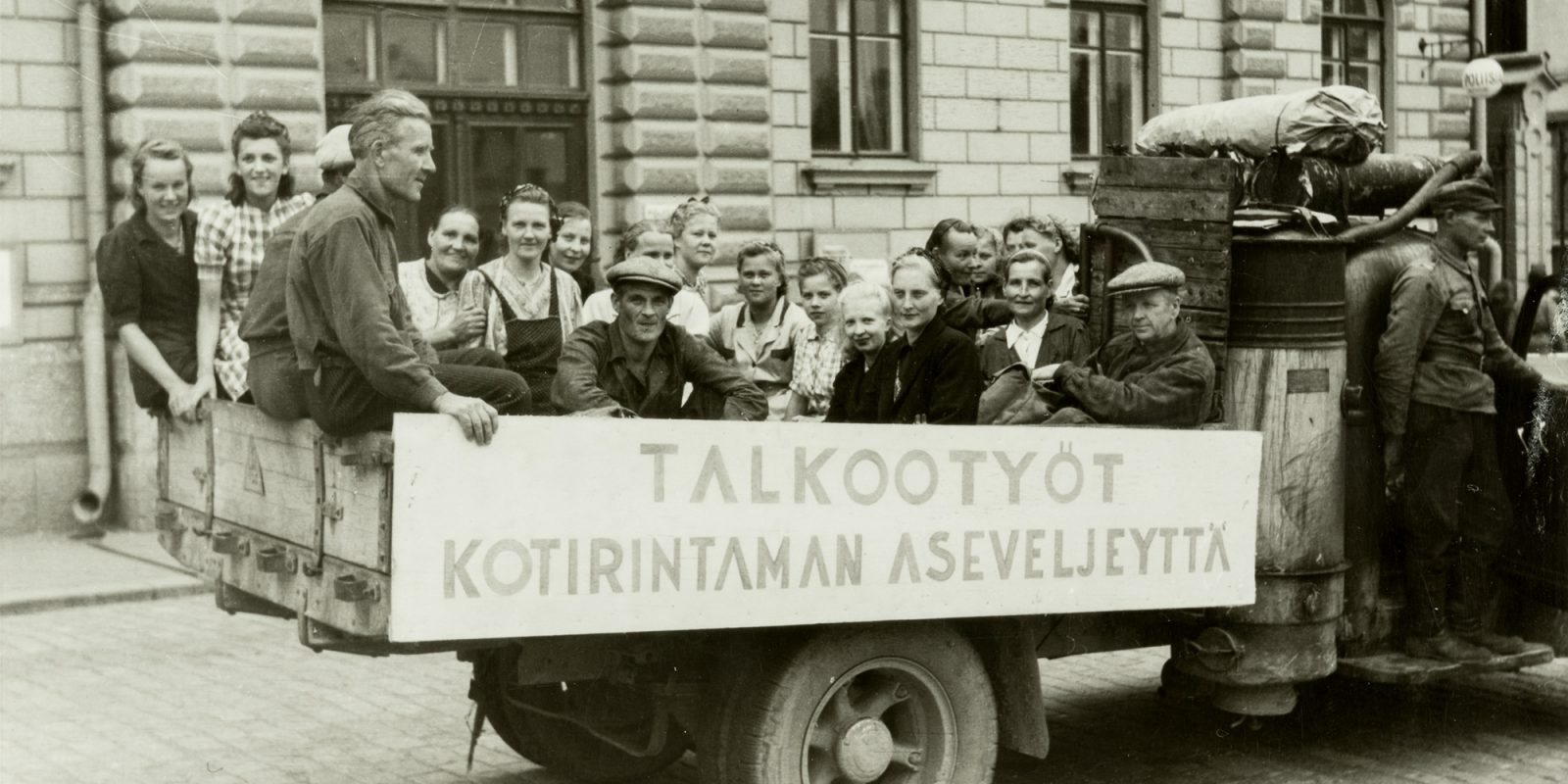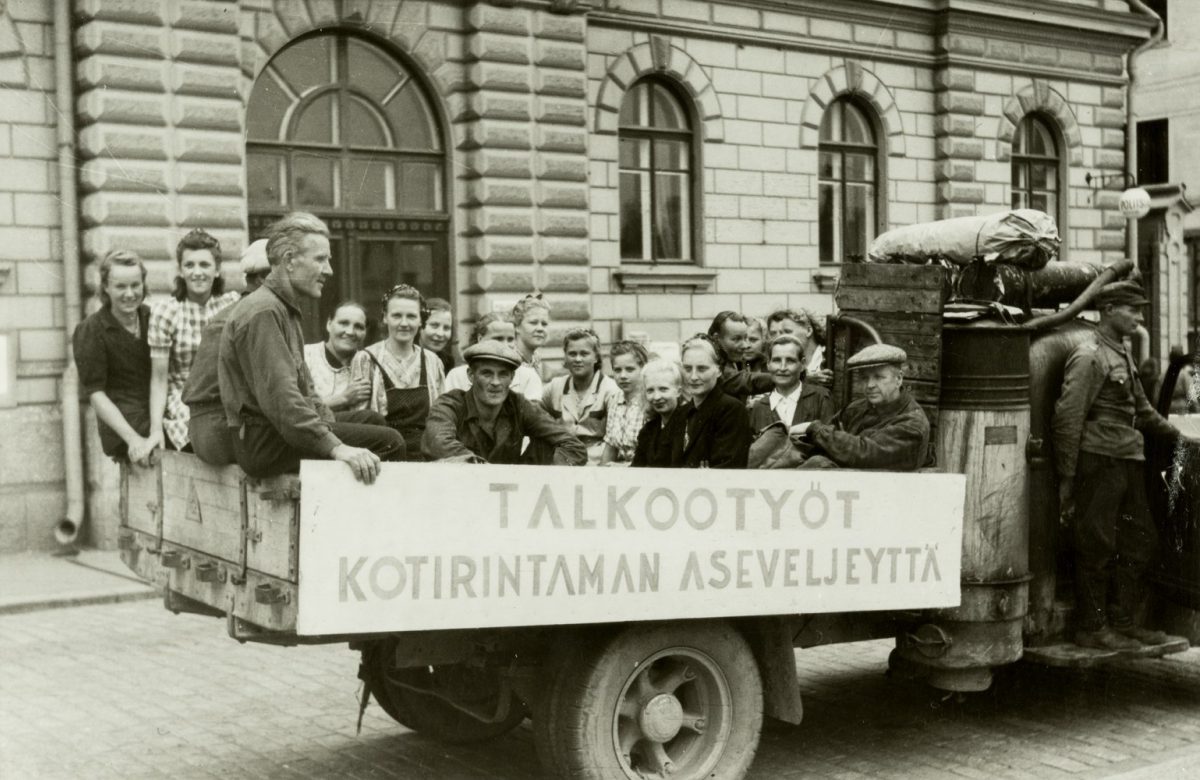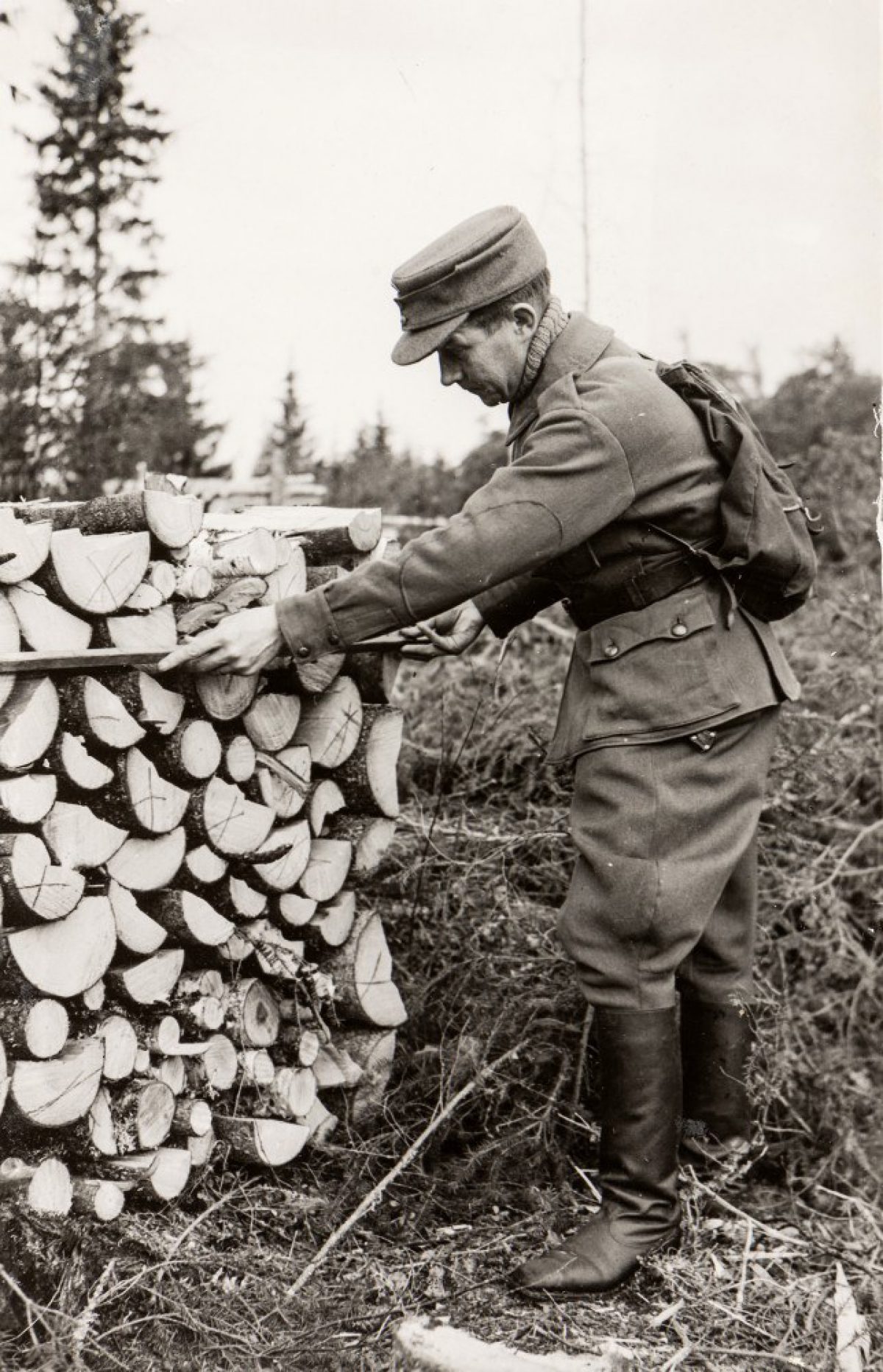
A nation of volunteers
‘Volunteer and inspire your neighbours to do the same.’
During the Continuation War 80 years ago, in the early autumn of 1942, the amount of firewood available in urban settlements was worryingly low. There was a shortage of labour, because nearly one third of the working-age men were on the front, defending their country. In order to resolve the problem of firewood, a goal was set to chop a million cubic metres of wood between October and November. This was done on a voluntary basis and ultimately resulted in 1.2 million cubic metres of wood. In 1942–44, around 2.1 million volunteers took part in this work, close to 0.5 million of them women. A magazine called Talkoopäivystäjä wrote on 1 November 1942: ‘We believe that any man would take their hat off to Mrs Senja Juusola from Ylitornio, who very commendably chopped four cubic metres of firewood in four hours.’
President Risto Ryti also praised the citizens for their volunteering efforts and the significance of this work in his Independence Day speech on 6 December 1941: ‘Regular peace-time work is not enough. In addition to it, everyone must contribute to our goals by volunteering, which is something that our nation has grown used to over the centuries.’
During the Second World War, such volunteer work expanded into a social movement. Volunteers helped Karelian evacuees, families of servicemen, wounded veterans, war widows, war orphans and low-income families with multiple children. The main tasks included help with farm work, particularly during harvest time. In addition, volunteers built homes for servicemen and evacuees, cut down trees and chopped firewood.
The volunteer organisation Suomen Talkoot was founded in autumn 1940. By the end of the year, it had gained 41 nationwide organisations as its members. However, due to administrative reasons, it was dismantled in 1942 and replaced by an association named Suurtalkoot. The aim was to increase the amount of volunteer work and make it more efficient, unify the nation and boost the citizens’ morale. By the time Suurtalkoot ceased operating in 1949, the number of its member communities had risen to 58, representing all sectors and classes.
This war-time volunteer work taught the nation to believe in its own strength. Talkootyö magazine wrote on 1 February 1944: ‘If you happened to visit Kannus during the haymaking season, you would have noticed that the town, normally so lively, was completely deserted. No coachmen, no people watching the trains go by nor anyone else for that matter could be seen. But the hayfield by the road was incredibly busy...’
The image collection of Suurtalkoot can be viewed at www.finna.fi and www.museovirasto.finna.fi.
Text: Jaana Onatsu
Kamera 2/2022

Volunteers on the back of a pickup in Hämeenlinna, 1942–1944. Photo: J. Kahri / Suurtalkoot ry´s collection / Picture Collections of the Finnish Heritage Agency

Director Elomaa taking measurements during a wood chopping campaign in 1942. Photo: M. E. Palomäki / Suurtalkoot ry´s collection / Picture Collections of the Finnish Heritage Agency